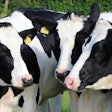
Supply chain pressures during the COVID-19 pandemic have forced many livestock and poultry producers to make the tough decision to cull their animals due to a lack of available processing capacity.
That situation has garnered a lot of attention from the media, which has put euthanasia in animal agriculture on the minds of consumers with little-to-no ties to farming and ranching.
Dr. Candace Croney, director, Purdue University Center for Animal Welfare, said there have been many positive advancements made to carry out euthanasia less stressful to the animals. It is a story that is worth telling, Croney said, but she questioned whether now would be the appropriate time.
“People are hearing that the supply chain is broken and that what we are doing in terms of meat production is not working at this point in time,” Croney said while speaking during the Animal Agriculture Alliance Virtual Stakeholders Summit’s pre-conference webinar, “Science as a Tool to Address Animal Welfare.”
Very few people completely understand why these supply chain interruptions are occurring, but they are still talking about them because it is a topic that matters to them, Croney said. For many, it is seen as “evidence that there is something wrong with animal production that relates back to animal welfare,” she said.
Croney said it is critical that those concerns are addressed. But those are tough conversations to have, particularly during times of crisis when emotions are already running high.
“The question for many in animal agriculture at this point in time is do you actually even engage in this topic, or do you avoid it altogether because it is so contentious,” Croney said. “We have amazing science right now that is helping us to refine euthanasia on an individual basis for animals, and also euthanasia when it is applied to large groups of animals. The public does not necessarily know that, and the question becomes, ‘Do we share this information with them, if so, how do we do that sensitively?’ And very importantly, we need to be timely in these conversations.
“Having this occurring at this point in time during a pandemic, and at a point in time when there is an interruption to the food supply may not be the best time. But we really need to think about, ‘If not now, when do we need to have these conversations?’”
Also participating in the webinar, held on May 5, was Karen Christensen, senior director of animal welfare, Tyson Foods.
She also stressed the importance of the agricultural community communicating with customers and consumers, “and letting them know that welfare is a big part of the commercial agricultural story.”
And while she didn’t specifically apply it to the topic of advances in euthanasia methods, she advised that messages need to be appropriate, both in terms of when they are shared and how they are shared.
“We really are learning what to communicate,” said Christensen. “How much information do people want to know about what we do every day? Does science resonate with the public, and if it doesn’t, then how can we still take those learnings and turn them into something that the public can relate to?"
View our continuing coverage of the coronavirus/COVID-19 pandemic.



















